The lithosphere, which is composed of the upper part of the mantle and the Earth’s crust, serves as the solid shell of planet Earth.
Comprising stable platforms and moving fold belts, the lithosphere provides complete coverage over the Earth’s surface, shielding it from the extreme temperatures emanating from the radiant Earth’s core.
While the thickness of the solid shell varies, measuring tens of kilometers in some regions and surpassing several hundred kilometers in others.
Be cautious! Detection of plagiarism in your work can lead to severe consequences, including expulsion. If you are unable to write your own content, consider ordering assistance here.
Situated between the asthenosphere below and the hydrosphere and atmosphere above, the lithosphere plays a crucial role in Earth’s structure.
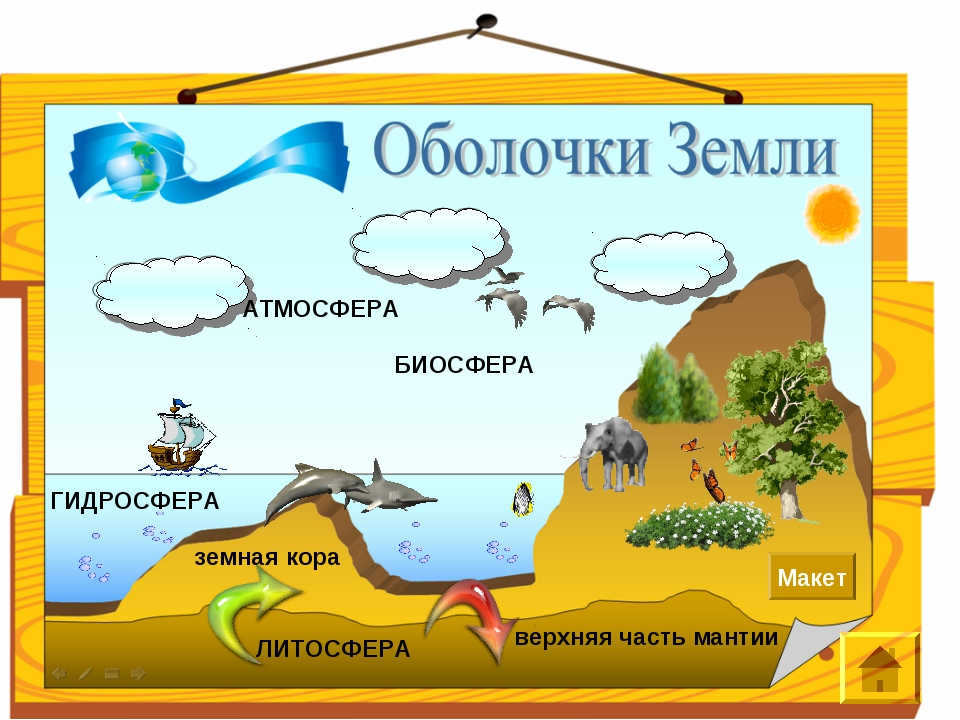
Layers of the lithosphere
In the field of geology, it is common practice to divide the lithosphere into three distinct layers: the Earth’s crust, the transition zone, and the upper mantle layer.
Earth’s crust
The Earth’s crust is the topmost and thinnest layer of the lithosphere, extending approximately 30 km in flat areas and reaching depths of up to 80 km in mountainous regions. It is further classified into two types: oceanic crust and continental crust. The oceanic crust is mainly composed of basalt and sedimentary layers, while the continental crust consists of three layers:
- Basaltic layer, which is primarily composed of igneous rocks.
- Granite layer, which contains quartz and feldspar in its composition.
- Sedimentary layer, which may include rocks of both volcanic and sedimentary origin.
As of now, there is no available information indicating that the division of the crust into continental and oceanic exists on other planets. Consequently, scientists lean towards viewing this phenomenon as a distinctive characteristic specific to the Earth.
Transitional layer
Directly beneath the Earth’s crust lies a boundary layer comprised of ash, which forms as a result of the impact of electrically discharged lightning in the upper part of the mantle. This layer experiences significant pressure from both the Earth’s crust and mantle, resulting in its high density and ability to provide thermal, hydro, and electrical insulation.
The layer of ash is referred to as the Mohorovicic boundary, named after the Croatian seismologist who first discovered it in 1909.
The uppermost part of the mantle
Beneath the Mohorovičić boundary lies the uppermost layer of the mantle, which is filled with scorching magma. On occasion, this molten rock escapes through the intersections of tectonic plates or fractures in the Earth’s crust. As a result, humans are able to witness the spectacular phenomenon of volcanic eruptions.
During the process of magma ascent within the depths of the Earth, diamonds – the toughest minerals on the planet – are created.
Tectonic Plate Movement
Tectonic plates are sections of the lithosphere that are constantly in motion, sliding atop the asthenosphere as solid, rigid blocks.
These blocks move in relation to one another, with a speed of 2-2.5 cm per year. Each movement results in the deformation of the Earth’s crust along the boundaries. The friction between plates gives rise to earthquakes, crustal faults, mountain ranges, and oceanic trenches.
Since the Earth’s crust exists in both continental and oceanic forms, tectonic plates are further classified as continental, oceanic, or mixed.
Landforming and its Internal Processes
The internal processes of landforming are primarily caused by the vertical and horizontal displacements of tectonic plates. These movements give rise to various geological formations, including:
- folds – undulating bends in the Earth’s crust
- faults – fractures in rock formations
- mountain systems and ridges
- deep-water troughs – areas where one tectonic plate subducts beneath another in the ocean
Furthermore, it is common for earthquakes to occur at the boundaries of tectonic plates. As a result, scientists often refer to these regions as seismic belts.
External processes contributing to the formation of landforms
In addition to internal forces, the relief of the planet is influenced by external factors:
- Weathering – the alteration and breakdown of rocks caused by the chemical and mechanical effects of the atmosphere;
- Glaciation – the smoothing of landforms through the movement of ancient glaciers;
- Fluvial action – the creation of river valleys and ravines;
- Wind activity – the formation of aeolian landforms.
Aeolian landforms tend to develop in open areas with few obstacles. When the wind carries sand, dust, and small soil particles, these particles get trapped by obstacles, leading to the formation of large hills.
Wind-formed landforms in the Russian Federation can be observed in certain areas along the Baltic coast and the Caspian lowlands. They are known as barchans and dunes, depending on their structure.
The Interrelation and Interaction of Earth’s Different Shells
All of Earth’s shells are interconnected, forming a geographical shell. This includes the upper layers of the lithosphere, hydrosphere, and atmosphere.
Within the geographical shell, substances exist in three states: solid, liquid, and gaseous. Life thrives within this shell.
The interaction between these shells involves the exchange of energy and substances:
- The water cycle creates a closed system connecting the oceans, land, and atmosphere, serving as a link between the solid and air shells;
- Air plays a role in the weathering process of the Earth’s crust as it permeates through the lithosphere.
- The composition of the air is altered by volcanic eruptions.
- Changes in the air’s composition can impact the amount of solar radiation absorbed by the surface of the lithosphere.
Modifying one component inevitably leads to modifications in the others. That is why it is crucial to prioritize the well-being of the entire planet.
Did you find this article helpful?

The lithosphere of the Earth, also known as the “rock shell,” is a crucial component of the planet’s structure. It is a solid, rigid layer that encompasses the Earth’s surface and is composed of various geological materials.
Composition
The lithosphere is made up of several elements, including the Earth’s crust and the uppermost part of the mantle. The crust consists of different types of rock, such as granite and basalt. Beneath the crust lies the uppermost part of the mantle, which is denser and contains materials like peridotite.
Importance
The lithosphere plays a vital role in the planet’s overall functioning. It provides a stable foundation for the Earth’s ecosystems and supports the growth of plants and animals. Additionally, it is responsible for the formation and movement of tectonic plates, which shape the Earth’s surface and cause geological phenomena like earthquakes and volcanic activity.
The lithosphere, which consists of the upper part of the mantle and the Earth’s crust, is a layer that covers a planet. Scientist Burrell first defined this in 1916. It is situated on the softer layer known as the asthenosphere. The lithosphere spans the entire planet, but its thickness varies in different regions. On land, the shell is typically 20-200 km thick, while in the oceans it is 10-100 km thick. One fascinating aspect is the existence of the Mohorovicich surface, a boundary that separates layers with different seismic activity. This surface also exhibits an increase in lithosphere substance density. Interestingly, the Mohorovicich surface mirrors the Earth’s topography.
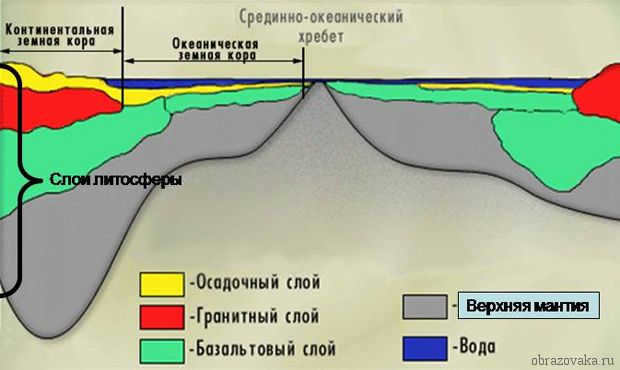
Formation of the lithosphere
The lithosphere has been forming since the birth of our planet. It consists mainly of igneous and sedimentary rocks. Numerous studies have determined the general composition of the lithosphere:
- Oxygen;
- Silicon;
- Aluminum;
- Iron;
- Calcium;
- Trace elements.
The Earth’s crust is known as the outer layer of the lithosphere, and it is a relatively thin shell that measures no more than 80 km in thickness. The thickness of the crust varies, with mountainous areas having the greatest thickness and plains having the smallest. On the continents, the Earth’s crust consists of three layers: sedimentary, granite, and basalt. In the oceans, the crust is made up of two layers: sedimentary and basaltic, with the absence of a granite layer.
While many planets have a crust, only Earth has the distinction between oceanic and continental crust.
Beneath the crust lies the main part of the lithosphere, which is composed of separate blocks called lithospheric plates. These plates move slowly over a softer layer known as the asthenosphere. The study of plate movement is conducted by the field of tectonics.
that is meant to be read in conjunction with this one

The seven biggest plates are identified.
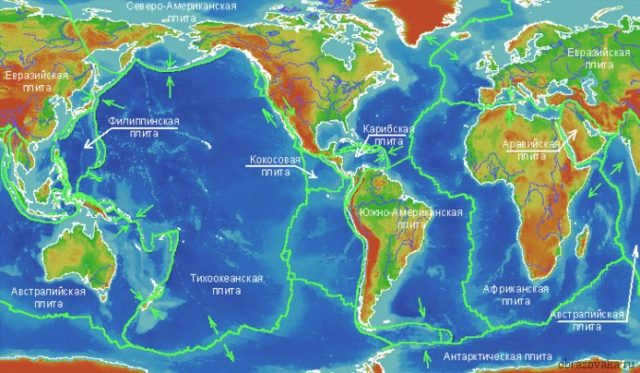
- Pacific. The Pacific lithospheric plate is the largest one. It is constantly involved in collisions with other plates and the formation of faults.
- Eurasian. The Eurasian lithospheric plate covers the entire continent of Eurasia, except for India.
- Indo-Australian. The Indo-Australian lithospheric plate includes Australia and India. It frequently collides with the Eurasian plate.
- South American. The South American lithospheric plate forms the continent of South America and a portion of the Atlantic Ocean.
- North American. The North American lithospheric plate contains the continent of North America, parts of Eastern Siberia, and portions of the Atlantic and Arctic Oceans.
- Africa is responsible for forming the African continent and parts of the Indian and Atlantic Oceans. The boundary between the tectonic plates in this region is the largest, as they move in different directions.
- Antarctica is responsible for forming the continent of Antarctica and its adjacent parts of the oceans.
What causes the movement of plates?
The motion of lithospheric plates is driven by various geological forces. These forces cause the plates to slowly change their shape over time, although the movement is so gradual that it is imperceptible to humans. Approximately 200 million years ago, all of the Earth’s continents were joined together in a supercontinent called Pangaea. However, internal processes within the Earth caused the continent to break apart, forming separate continents with boundaries that align with areas of crustal splitting. Today, the gradual warming of the climate can be considered as an indicator of ongoing plate movement.
Given that the movement of lithospheric plates is continuous, some scientists speculate that in several million years, the continents may once again converge and form another supercontinent.
What are the natural phenomena associated with the movement of tectonic plates? When these plates collide, seismic activity occurs, leading to earthquakes. In the case of collisions in the ocean, tsunamis can also occur.
The movement of the lithosphere is also responsible for shaping the Earth’s topography. When lithospheric plates collide, the Earth’s crust can fold and create mountains. In the ocean, this process can result in the formation of submarine ridges, while diverging plates can create deep-sea troughs. The planet’s relief is also influenced by the hydrosphere and atmosphere, including water and air currents.
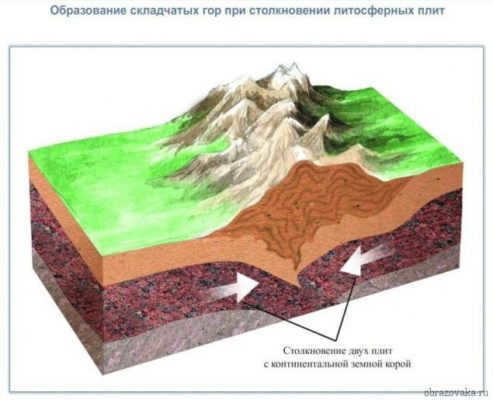
Ecological condition
An instance of the interrelation between the biosphere and the lithosphere is the active impact caused by human actions on the Earth’s outer shell. The fast-growing industry contributes to the full contamination of the lithosphere. Chemical and radioactive waste, hazardous substances, and non-biodegradable waste are being buried in the ground. The influence of human actions also noticeably affects the topography.
What are the key takeaways?
From our study, we have gained an understanding of the lithosphere and its formation. It is composed of various layers and its thickness varies across different regions of the Earth. The lithosphere contains a variety of metals and trace elements. Additionally, the movement of lithospheric plates can lead to the occurrence of earthquakes and tsunamis. Furthermore, it is important to note that human activities have a significant impact on the state of the lithosphere.
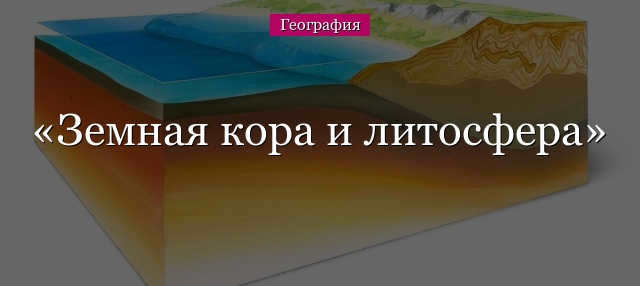
The Earth is characterized by a complex structure, with various layers contributing to its composition. Situated in the central region of the planet lies the core, primarily comprised of iron and nickel. The core itself is composed of a solid substance, while its outer section exists in a liquid state. Surrounding the core is the mantle, which contains substances in a unique and viscous state, maintaining their form due to the immense pressure. Finally, the uppermost layer of the planet is known as the crust.
The Earth’s lithosphere
The lithosphere is the solid outer shell of the Earth, comprising the Earth’s crust and the upper portion of the mantle down to the asthenosphere. It has a depth of 100-120 km beneath the continents and 50-60 km beneath the oceans.
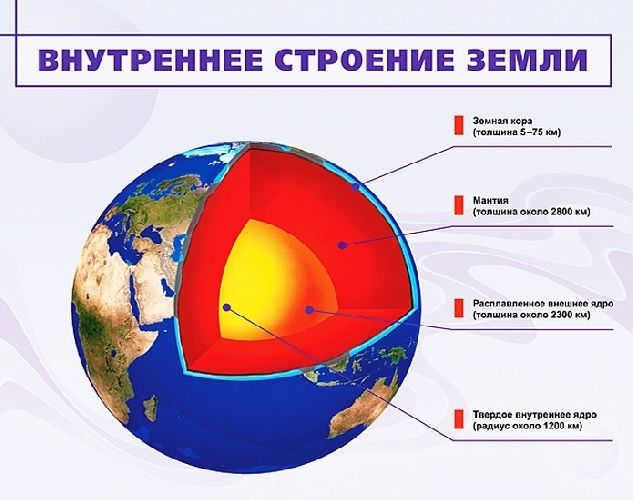
The word “mantle” comes from the Greek word for “covering” or “cloak”. The mantle acts as a protective cloak around the Earth’s core.
Located at the top of the mantle is a layer called the asthenosphere. This layer is more flexible compared to the layers above it and holds significant importance. Unlike the rigid lithosphere, the asthenosphere is capable of plastic deformation. It allows for horizontal movement of large blocks, known as lithospheric plates, along its surface. These plates can diverge, converge, or slide past each other.
The lithospheric plates consist of stable regions called platforms, which are separated by folded areas. Along the boundaries of these plates, there are regions of movement known as geosynclines.
The topography of the Earth is a reflection of the arrangement of the lithospheric plates or the Earth’s crust. On the continental platforms, there are consistently flat regions, while in geosynclinal areas, mountains can be found.
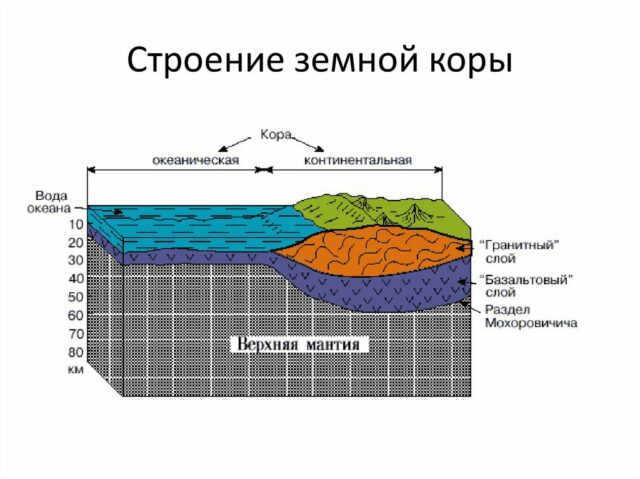
Structure of the Earth’s Crust
The Earth’s crust is the outermost solid layer of the planet that covers its entire surface. It can be divided into two main types: continental crust and oceanic crust.
There are notable differences between these two types. The continental crust has a three-layered structure, consisting of sedimentary rocks, granite, and basalt. Its thickness can vary from 40 km in flat areas to 70 km in mountainous regions.
In contrast, the oceanic crust has a two-layered structure, composed of a thin layer of sedimentary rocks and basalt. It does not contain granite. On average, its thickness ranges from 5-7 km to 10-15 km.
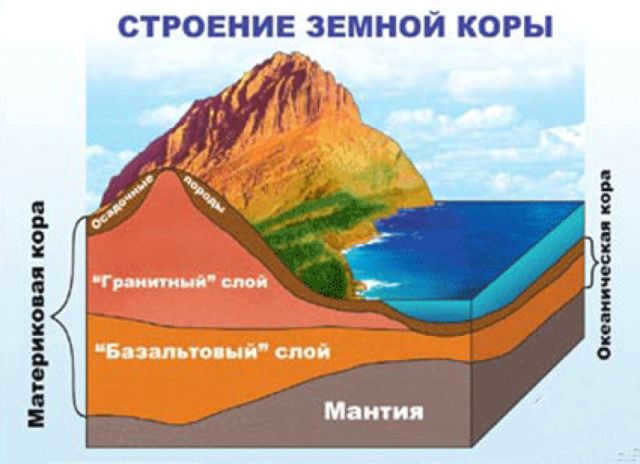
What sets the lithosphere apart from the Earth’s crust?
The Earth’s crust is a component of the lithosphere. It forms the outermost layer of the solid shell that encompasses the planet. A considerable portion of the Earth’s crust is submerged beneath the Earth’s oceans, while the remaining part is exposed to the atmosphere and the Sun’s heat. Consequently, the Earth’s crust can be regarded as the chilliest segment of the lithosphere.
As one delves deeper into the Earth, the temperature of rocks steadily rises. The mantle is heated to a scorching temperature of +2000 ºC, whereas the core reaches a blistering +6000 ºC.
The temperature of the most brilliant star in our solar system, otherwise known as the Sun, reaches a scorching +6000 ºC. Interestingly, the temperature of the Sun matches that of the Earth’s core.
The lithosphere, which encompasses the Earth’s crust, exhibits greater strength. The rocks found in the lower part of the lithosphere differ in composition from those in the crust. Unique substances can be found in the mantle that are absent in the Earth’s crust. Additionally, the mantle possesses a higher density.
The processes occurring within the mantle have a profound impact on the condition of the Earth’s crust. Volcanic eruptions, earthquakes, and the creation of mountains are all outcomes of mantle movements. The influence of the mantle is also evident in the movement of continents and the formation of valuable minerals. The core holds significant sway over the mantle.
The main distinction between the two components lies in the fact that the lithosphere encompasses the upper portion of the mantle, which accounts for the significant divergence in mass.
Regarding the Earth’s crust and the lithosphere, there exists a considerable similarity in terms of composition and rock properties.
A concise overview of the Earth’s internal structure can be presented to 6th-grade students during a geography class.
What Have We Learned?
The Earth possesses a complex structure, with its core occupying a central position and the mantle situated above it. The uppermost layers consist of the Earth’s crust and lithosphere.
Defined as the solid shell of our planet, the lithosphere plays a crucial role in supporting life on Earth. The term “lithosphere” originates from the Greek words “λίθος” (stone) and “σφαίρα” (ball), and it refers to the solid shell of the Earth. It is worth noting that the lithosphere is not motionless; it moves, and this movement allows for the existence of minerals, water, and other resources that sustain life.
This layer is located on the Earth’s surface and extends deep into the mantle, where it transitions into the next layer known as the asthenosphere, which consists of viscous rocks.
Life on Earth would be impossible without the presence of the lithosphere due to its crucial functions:
- The solid outer layer of the Earth is known as the lithosphere, and it is home to a variety of living organisms, including mammals, birds, insects, and humans.
- Within the depths of the lithosphere, valuable resources can be found, which are essential for the survival of these organisms.
- The lithosphere plays a crucial role in the functioning of all Earth’s systems, and it is responsible for the movement of the Earth’s soil and crust. Its thickness ranges from six to one hundred kilometers beneath the ocean, and from thirty to two hundred kilometers beneath the continents.
Structure
The structure of the lithosphere can be described as follows:
The lithosphere is composed of two main layers: the crust and the mantle. The crust is the outermost layer and is solid, while the mantle is the layer beneath the crust and is partially solid and partially liquid. The core, located at the center of the Earth, is also composed of both solid and liquid elements. The inner core is solid, consisting of Earth rocks, while the outer core is liquid, composed of molten rocks. The crust is primarily composed of Earth rocks that have solidified from hot magma. Sedimentary rocks, which form through natural processes such as erosion and chemical reactions in water, are a common type of Earth rock found in the crust. Other types of rocks, such as natural rocks like chalk and coal, as well as rocks formed through changes in the composition of existing rocks, can also be found in the crust.
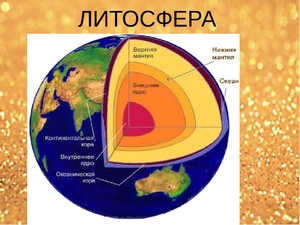
Origination
The lithosphere was formed through the following process: natural elements were released from the upper layer of the youthful Earth’s mantle, which subsequently consolidated into the planet’s solid outer shell. This ongoing process continues to this day, as various substances are discharged at the oceanic ridges and during the movement of mobile tectonic plates.
Experts have determined that the composition of the lithosphere comprises essential elements such as oxygen, iron, calcium, silicon, and aluminum. The structure of the lithosphere can be categorized into stable continental platforms and mobile tectonic folds.
Platforms are characterized by a solid foundation composed of granite or basalt, rendering them immobile. Ancient stable platforms can be found at the base of continents, while younger platforms emerge during the Precambrian era.
Movable belts, on the other hand, are the result of collisions between different landmasses, such as mountain ranges. These belts are primarily located at the edges of the lithosphere.
Mountains and mountain ranges are constantly being formed. For instance, the presence of a mountain range on a major tectonic plate indicates a collision between these plates. The Earth’s lithosphere is composed of fourteen plates, varying in size from large to small. Notable examples include the African, Eurasian, Antarctic, and Pacific plates.
It is important to note that the lithosphere is composed of granite, basalt, and sedimentary rocks under the continents, and the oceanic crust, which is made up of basalt and sedimentary rocks, is found under the oceans.
Boundaries and Roles
The lower boundaries of the solid layer are somewhat indistinct, as they consist mainly of a viscous medium, while the upper boundaries are quite clear, as the mantle and crust remain relatively unchanged.
This layer of the planet serves several key roles:
Therefore, the roles of the lithosphere are crucial for the sustenance and preservation of life on Earth. These roles become particularly evident when various natural factors or human activities impact the Earth’s development and the actions of mankind.
Chemical composition
The solid layer of the planet is composed of minerals, which are chemical compounds. These compounds give rise to rocks, and there are various types of minerals:
The predominant composition of this layer is magmatic (around ninety-five percent).
It is worth noting that the lithosphere is constantly in motion, leading to changes in the Earth’s appearance, including the formation of mountains, plains, lowlands, and continents. Human activity also has a significant impact on this layer of the planet, and not all of this impact is positive. Improper waste disposal, the use of chemicals and fertilizers, can negatively alter the composition of the lithosphere.
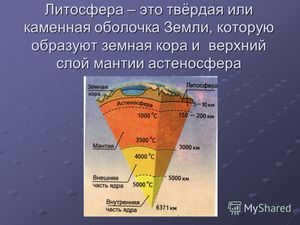
To sum up all the information mentioned above, we can define the lithosphere as the external solid shell of the planet. It is composed of various layers with intricate chemical compositions, which play a vital role in supporting life on Earth. It is our responsibility as humans to safeguard and protect this solid layer from contamination caused by the chemical and organic industries.
Video
This video provides information on the composition of the earth.
Please show your support by giving this video a thumbs up. It means a lot to our creators. Don’t forget to subscribe to our channel on Yandex.Zen and join our Vkontakte group.
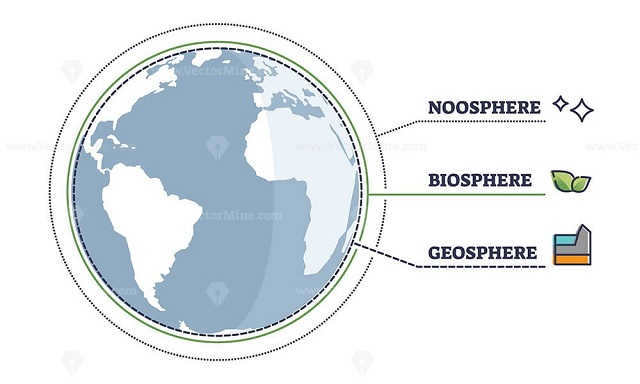
The Earth is made up of four interconnected spheres, also referred to as shells. These spheres are known as the biophysical elements and consist of the hydrosphere (water and water resources), biosphere (all living organisms and their byproducts), lithosphere (land and the Earth’s surface), and atmosphere (air). Each of these spheres has unique characteristics.
Unique Characteristics of Earth
Earth stands out among the planets in our solar system due to its distinctive features. These planetary characteristics shed light on the exceptional nature of our world and its ability to support life.
One remarkable feature is the abundance of liquid water. Earth is the sole planet in our knowledge that possesses vast quantities of liquid water on its surface. This phenomenon is not only unparalleled within our solar system, but it also plays a crucial role in creating the ideal conditions for the sustenance and evolution of life.
The second characteristic is associated with our atmosphere. The Earth possesses a dense atmosphere, comprised primarily of nitrogen and oxygen, which creates essential conditions for the existence of diverse life forms. The atmosphere not only shields us from perilous cosmic rays and meteorites, but also regulates the climate by ensuring moderate temperatures and sustaining the water cycle.
The third attribute is the presence of lithospheric plates. The Earth is a dynamic planet with a mobile lithosphere divided into numerous large and small plates. This results in geological activity in the form of earthquakes, volcanic eruptions, and mountain formation. The mobility of lithospheric plates enriches our Earth with various types of landscapes and fosters the development of valuable resources.
The diversity of living organisms is the fourth notable characteristic. The Earth’s biosphere is an extraordinary environment where a wide variety of life forms flourish. From minuscule bacteria to colossal mammals, our planet is home to countless species. Ecosystems, the interconnectedness between them, and the abundance of biodiversity all contribute to Earth’s exceptional and irreplaceable nature for sustaining life.

All of these characteristics describe the Earth’s various strata.
What are the Earth’s strata
The Earth’s strata refer to the different layers of material that compose the planet. Ranging from the innermost core to the outermost layers of the atmosphere, each stratum possesses distinctive traits and functions. While there may exist a transition zone and intermingling of materials between any two strata, each layer possesses its own distinct boundaries and physical attributes.
Phases of Evolution
The Earth has undergone various phases of evolution in its geological history, which have led to the formation of its current structure.
The initial phase in the development of the Earth’s geological layers commenced with the establishment of the hydrosphere, a layer composed of water in different states of matter. During the early stages of the planet’s formation approximately 4.6 billion years ago, the Earth was molten and engulfed in lava. Over time, as oceanic bodies formed, water began to accumulate, eventually forming the hydrosphere and covering a substantial portion of the Earth’s surface.
The next phase is linked to the development of the atmosphere. Roughly 4.4 billion years ago, volcanic activity commenced on our planet and released water vapor, along with gases, from the planet’s depths. Over time, these emissions contributed to the formation of the atmosphere. Initially, it primarily comprised carbon dioxide, water vapor, and nitrogen.
The subsequent stage entails the creation of the lithosphere. Roughly 4 billion years ago, the activity of the planetary platform began, resulting in the formation and movement of the initial continents. This process ultimately led to the creation of the lithosphere, which constitutes the solid outer layer of the Earth and consists of various types of rocks and stones.
The fourth phase marks the arrival of the biosphere, a layer encompassing all the diverse organisms that dwell on our planet. Around 3.5 billion years in the past, the advent of biological evolution brought forth the first rudimentary life forms on Earth. These early beings proceeded to colonize a wide range of habitats, from aquatic ecosystems to terrestrial landscapes.
Earth’s Shell Varieties
The Earth’s structure, encompassing all areas of geography, can be categorized into core shells, as well as additional shells recognized by certain researchers.
The core shells consist of the lithosphere, hydrosphere, atmosphere, and biosphere. These are the most significant and well-known components. Conversely, the additional shells, though less substantial or tangible, possess their own significance and role on our planet.
In addition to the aforementioned shells, scientists are actively studying and classifying other shells of the Earth. These shells can be separated into two major groups – external and internal – each with unique properties and influences on the planet.
Earth’s external layers
The inventory of Earth’s external layers encompasses all the layers that can be seen and accessed by us, which are positioned above the Earth’s crust. The interconnectivity of these layers guarantees an uninterrupted interchange between the substances and entities that exist within them.
Layers beneath the Earth’s crust
Scientists have constructed a schematic model of the Earth’s layers, which reveals that the inner shells encompass all the layers located beneath the Earth’s crust. Since humans have not yet been able to penetrate the Earth’s core, scientists categorize the inner shells into groups based on the velocity of seismic waves.
A comprehensive list of the Earth’s existing shells
What are the primary shells found on Earth? It is essential to examine each of them in detail.
The Earth’s solid shell: the lithosphere
The lithosphere is the outermost and most resilient shell of our planet. It constitutes the uppermost part of the Earth, extending from its surface downwards, where rocks and minerals undergo a transition from solid to liquid, forming lava.
Directly beneath the solid lithospheric shell lies the molten asthenosphere, which allows for the free movement and displacement of the underlying rock layers. It is due to these movements and discontinuities that natural phenomena such as earthquakes occur. The lithosphere plays a crucial role in interacting with the other shells of the Earth.
The lithosphere is made up of lithospheric plates that are in constant motion. This phenomenon is accountable for the creation of mountains, ocean trenches, and continental rifts. When lithospheric plates collide, they have the ability to uplift and form mountain ranges, while one plate can descend beneath another via the process known as subduction. These geological processes have a significant impact on the development of landforms and climate patterns on our planet.
The Earth’s hydrosphere: A Unique Water Envelope
The hydrosphere, also known as the water envelope, is the protective shell that covers approximately 70% of the Earth’s surface. This encompasses not only the vast seas and oceans but also the intricate network of rivers and streams, the serene lakes, both natural and man-made reservoirs, the mysterious swamps, and the hidden underground water resources.
The hydrosphere, however, is not limited to liquid water. It also includes water in its gaseous and solid states, such as the majestic glaciers. The water reserves on our planet are in a perpetual state of movement and circulation, embodying a vital characteristic of the hydrosphere.
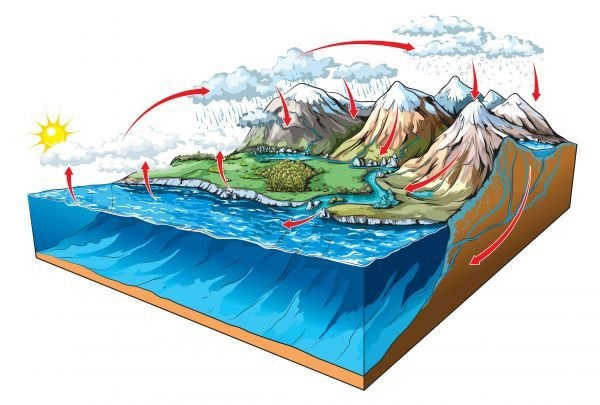
What are the shared characteristics of the hydrosphere and lithosphere?
- Connection: The hydrosphere and lithosphere are interconnected and experience mutual influence. The hydrosphere impacts the development of Earth’s landforms by means of erosion, sedimentary processes, and the movement of water. Conversely, the lithosphere shapes the properties of the hydrosphere, such as rivers and lakes, through its geological composition.
- Circulation: Both shells experience the circulation of materials. In the lithosphere, there is a geological cycle that includes the formation of mountains, movement of lithospheric plates, and volcanic activity. In the hydrosphere, there is a process known as the water cycle: water goes through evaporation, condensation, precipitation, and runoff, ensuring the continuous movement of water resources on the planet.
- Impact on Life: The lithosphere, biosphere, and hydrosphere play a vital role in supporting life on Earth. The lithosphere provides the base for various species and creates the conditions for ecosystems to thrive. The hydrosphere provides the necessary water for the survival of all organisms and serves as a habitat for numerous species of plants and animals.
The biosphere is Earth’s living envelope
Earth’s unique geo-envelope, known as the biosphere, is home to a diverse range of living organisms. This includes plants, animals, fungi, and protozoan organisms, as well as other elements on our planet that are impacted by the biosphere.
Spanning approximately 1 km above the Earth’s surface and extending the same distance into the soil, the biosphere encompasses a wide array of ecosystems.
As the most vulnerable envelope to environmental changes, the biosphere has experienced numerous processes of origin, transformation, and extinction throughout the history of life on Earth.
Up to this point, over 2 million species of plants, animals, and other organisms have been documented by scientists, but it is thought to be just a small portion of the true range of biodiversity on our planet. Scientists estimate that it will take at least five centuries of uninterrupted effort to comprehensively catalog all of the Earth’s flora and fauna.
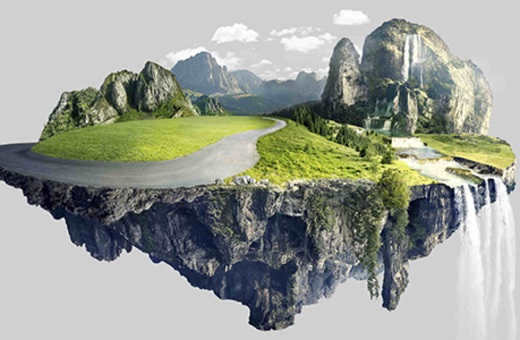
The Atmosphere: Earth’s Unique Air Envelope
Earth’s atmosphere, also known as the air envelope, plays a crucial role in our planet’s ecosystem. Just like the lithosphere, it is influenced by various life forms. Spanning from the Earth’s surface to the outer space, the atmosphere boasts a complex composition, consisting of multiple distinct layers.
One layer that exists in the Earth’s atmosphere is called the troposphere, which is situated closest to the Earth’s surface. The troposphere’s altitude varies in different regions of the planet and typically does not exceed 15 kilometers. Positioned above the troposphere is the ozone layer, which serves as a protective shield from potentially hazardous space radiation and possesses a thickness of approximately 7 kilometers.
Another layer, known as the stratosphere, lies above the troposphere. This atmospheric layer is found approximately 100 kilometers above the Earth’s surface and primarily contains sparse gases.
The ionosphere starts above the stratosphere and stretches into space. It is within the ionosphere that the occurrence known as the aurora borealis takes place. The atmosphere is an essential component of the Earth as it plays a crucial role in sustaining life. Its various layers possess distinct characteristics and are interconnected, offering defense against harmful influences and fostering a range of natural phenomena.
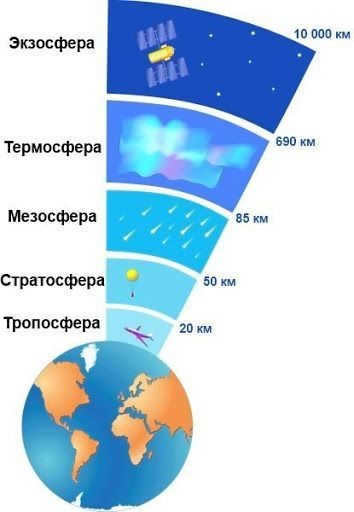
What is the connection between the atmosphere and hydrosphere? Let’s delve deeper into the topic and explore the processes that take place between these two layers of our planet and understand why they are closely intertwined.
The interconnection and interaction of the various layers of the Earth’s shell
The interrelationships among the components of the geographical shell are evident in the mutual interactions between all its constituent parts, including the cycling of substances and energy.
The interactions between the different components of the geographical envelope have a significant influence on their functioning. For instance, chemically pure water on its own is of little use to organisms, whereas naturally pure water, modified through interactions with rocks and the atmosphere, becomes a vital source of life.
The cycling of substances within the geographical envelope can be highly intricate. The water cycle involves changes in the physical state of water, while the biological cycle entails chemical transformations. The geological cycle (the cycle of solid elements) takes place over millions of years.
Rocks go through a process of disintegration and erosion, after which they are carried by water currents into the Earth’s oceans, where they accumulate on the seabed and eventually transform into sedimentary rocks.
The circulation of matter and energy within the Earth’s geographical system is a fundamental aspect of its operation. This phenomenon showcases the intricate dynamics and significance of interactions among the various elements of the system.
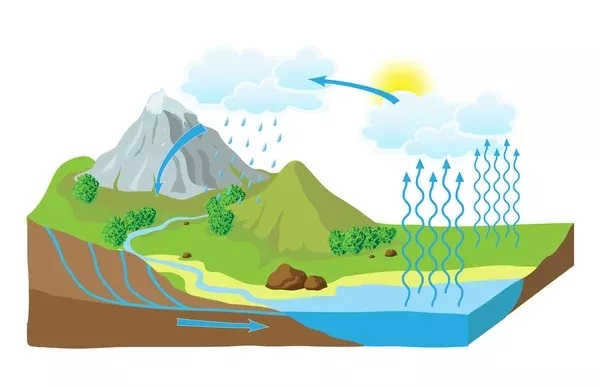

Key concepts, processes, patterns, and their implications
The movement and recycling of substances within a geographical envelope is known as substance cycling. One example of this is the water cycle, which involves evaporation, condensation, precipitation, and runoff.
The interaction between the Earth’s geospheric envelopes, or shells, is a complex process that follows certain patterns. For instance, water, a component of the hydrosphere, undergoes evaporation in nature and enters the atmosphere in its gaseous state, contributing to its formation.
Simultaneously, the soil layer, which is part of the lithosphere, is eroded by streams of liquid water. Liquid water is released from the atmosphere and falls into the hydrosphere and onto the upper part of the Earth’s solid shell in the form of rain and other atmospheric phenomena.
Distinguishing features of the biosphere compared to other Earth shells
The biosphere is a distinctive shell of our planet, consisting mostly of various living organisms. It is important to highlight its significant difference from other geospheres, which originated from non-living matter. The biosphere formed later and emerged in the hydrosphere less than 4 billion years ago. While life has only existed on the Earth’s surface for approximately 500 million years, the geographies of the hydrosphere, atmosphere, and lithosphere were established much earlier.





